

The Western Interior Seaway (also known as the Pierre Seaway) covered much of the western interior from approximately 69 to 80 million years ago, during the Cretaceous (late Campanian to early Maastrichtian (Scott, G.R. & W.A. Cobban, 1986 referenced in 1). The Pierre Shale represents deposition from this marine environment. Well-preserved fossils are somewhat rare in the Pierre Shale of Colorado, but a location known as Baculite Mesa near Pueblo is one of the exceptions. The Pierre Shale at Baculite Mesa ranges from fine shades of gray to light beige/tan. The area is loaded with invertebrates such as ammonites, baculites, inoceramus clams, scaphites, pelecypods, gastropods, and nautiloids.
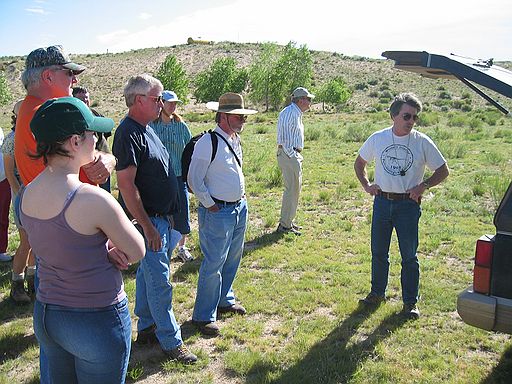
Malcolm Bedell providing details and cautions before the dig.Specific locality information will not be provided here at the request of the private land owners. There is generally no public access to this land though the land owners have been willing to allow some access by paleontological groups or other groups of a scientific/academic nature. One group, the Western Interior Paleontological Society (WIPS) has an annual field trip to the site.

Walking westward from the Tom Hollow parking area.
In this area, you primarily look for fossils or concretions
containing fossils that have weathered out of the canyon walls.The purpose of these pages is to provide specimen images and identification which may be of use to people studying the Pierre Shale and to future WIPS field trips to the area. Special thanks to Malcolm Bedell Jr. for organizing and leading the field trip and for providing the field trip guide containing great information and references. This guide is the source of much of the information found here.
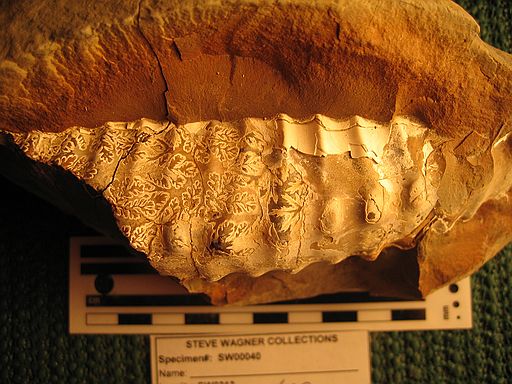
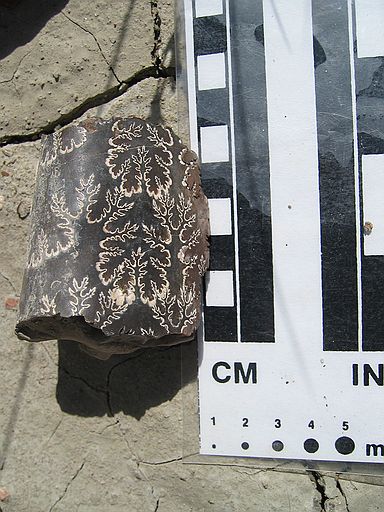
Baculites asperiformis
Meek
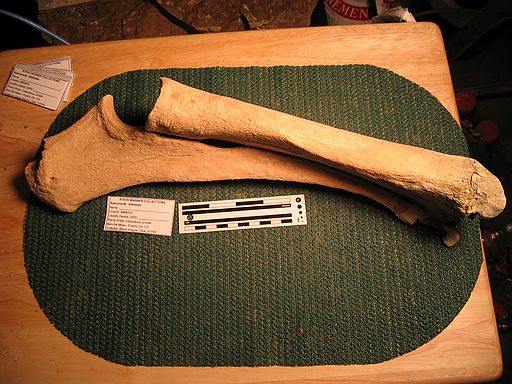
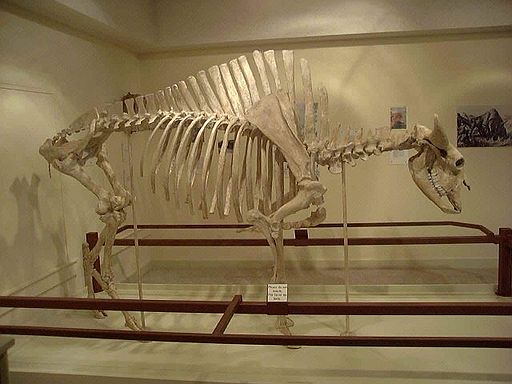
Bison antiquus - radius/ulna
The above find of a radius/ulna of a Bison antiquus was quite unexpected as we were working the Cretaceous shales of the Pierre Interior Seaway. This bone was found high in the canyon wall. It is actually from a much younger age. By carefully observing the canyon wall, you can identify what paleontologists & geologists call "reworked" material. It was still in the Cretaceous shales, however it was at a much higher level and was actually "reworked" by recent erosion. At this site, you can clearly see the original material versus the reworked material in the canyon wall. The original shale material is layered and is extracted from the wall in these clearly defined layers. The reworked material lies above the original shale and it does not display these layers - it is severely eroded and is similar to modern soils.So, the massive Bison antiquus died in the area of Cretaceous shales of the Pierre Interior Seaway. It was subsequently buried by erosion/deposition by more modern environmental conditions.
Note regarding fossil images: I'm new to identifying invertebrates of the Pierre Shale. Some specimens may have errors in identification. Responsibility for these errors rests entirely on myself, Steve Wagner. I would greatly appreciate your help in accurately identifying these specimens.
|
|
Hosting donated by Wagner Database Solutions, Inc. |